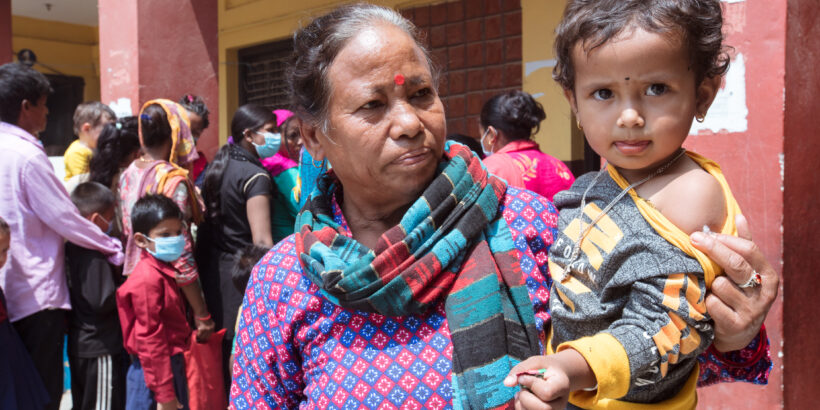For many high-income countries, typhoid is a disease of the past, thanks in part to municipal investments and improvements in safe water, sanitation, and hygiene infrastructure (WASH). However, one-third of the global population lives in areas where typhoid is still endemic; more than 9 million people, mostly children, continue to fall ill each year. Antibiotics have been used to treat typhoid since the 1940s but growing drug resistance poses a major threat to effective treatment and control of the disease. The evolution of extensively drug-resistant (XDR) typhoid, which is resistant to almost all available oral antibiotics, intensifies the need to track the spread of drug-resistant Salmonella Typhi (S. Typhi) and implement preventative solutions.
In response to the growing threat of drug-resistant typhoid, The Global Typhoid Genomics Consortium (GTGC) was established to unite the typhoid research community to consolidate available genomic data. The consortium seeks to enhance the visibility of drug resistance to inform public health policy and action for typhoid control using genome-derived data. The Consortium recently published an updated overview of the global diversity of S. Typhi genotype and their association with drug resistance. These data can help inform antibiotic stewardship practices and typhoid conjugate vaccine (TCV) introduction decision-making.
Sequencing the evolution of typhoid genomes
This analysis leverages the largest S. Typhi genome sequence compilation to date with a remarkable 13,000 genomic samples submitted from 111 countries. An open call to researchers to join the Consortium and share sequence data and standardized metadata was made. Consortium members then analyzed the data to describe genotype and drug resistance diversity and trends over time and geography. These data show that drug resistance is becoming more common and more problematic.
Ciprofloxacin non-susceptibility is widespread, and full ciprofloxacin resistance is 20% prevalent in South Asia. While XDR typhoid is not yet established outside of Pakistan, ceftriaxone resistance has emerged in several other non-XDR genotypes in South Asia. Azithromycin resistance is still rare but has emerged independently at least thirteen times within this dataset. The overuse of antibiotics, often without proper diagnosis, means that resistance to these agents will likely continue to develop. As this trend continues, it will become increasingly difficult to effectively treat typhoid.
The evolution of drug-resistant typhoid has implications for families and health systems. Both will be increasingly burdened with the need for more expensive and less available intravenous antibiotic treatments. Resistance to all oral antibiotics used to treat typhoid has been reported. This highlights the urgent need to pool high-quality sequence data and standardized metadata to track the emergence and spread of drug-resistant typhoid though initiatives like the GTGC in order to inform TCV implementation to reduce disease transmission and antibiotic use.
Ongoing data analysis and sampling are crucial
As treatment options for typhoid become more limited, prevention efforts must be prioritized. TCVs are an effective and proven tool to mitigate disease transmission and are effective against drug-resistant S. Typhi strains. This analysis provides decision makers with new, actionable data to inform TCV decision-making. The continuation of S. Typhi whole genome sequencing will also facilitate measuring the impact of TCV on drug resistance as well as disease transmission. These data can guide decision-making and public health interventions in the future.
As government leaders at the global and local levels consider myriad health priorities, data from the GTGC provide insights on an urgent health problem that has a readily available solution. In countries and regions where drug-resistant typhoid is increasing, these data can guide TCV use to help keep children and communities protected.
Get involved
We are eager to broaden the GTGC network and engage with a larger, more geographically diverse group of researchers and policymakers. If you are interested in joining the Consortium, please visit the webpage: https://www.typhoidgenomics.org for more information or email us at info@typhi.net. There are multiple opportunities for involvement in data sharing, curation, analysis, visualization, and interpretation. The ability of the Consortium to monitor trends in transmission dynamics and drug resistance can be enhanced through broader participation. We look forward to hearing from you!
Cover photo: A child after receiving TCV during the campaign in Nepal. PATH/Rocky Prajapati.



